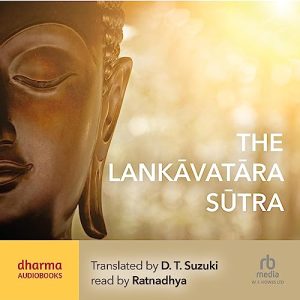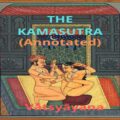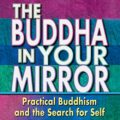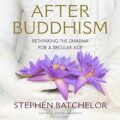The Lankavatara Sutra
The Lankavatara Sutra
English | July 20, 2023 | ASIN: B0C9MX8527 | M4B@65 kbps | 13h 45m | 392.26 MB
Author: D.T. Suzuki
Narrator: Ratnadhya
The Lankavatara Sutra, dating from the early years of the Common Era, sometime before 443, is one of the most important Mahayana Buddhist texts, not least because of its influence on later Tibetan, Chinese and Japanese Buddhism. One of its possible early translators in the 8th century was Gunabhadra, who is sometimes regarded as the first father of Zen in China.
The Sutra takes the form of a dialogue between the Buddha in his cosmic form (as opposed to the historical figure of the Pali Canon) and the Bodhisattva or ‘Great Being’, Mahamati. The Bodhisattva, as represented by Mahamati, is the enlightened presence in the world, foregoing the bliss of Nirvana and enlightenment for the sake of oneself alone, in order to lead all beings to that state of liberation, of complete non-attachment, as taught by the Buddha.
The Sutra is especially concerned with the teaching of ‘Emptiness’, or ‘Sunyata’ in the Sanskrit, the letting go of all concepts and constructs, through which we ‘label’ the world around us, thus perpetuating that duality of self and other, which, according to the Buddha’s teaching, lies at the root of the world’s suffering. This is what is meant in the Sutra by the ‘discriminating consciousness’, through which we make logical sense of the world on a relative basis and which is distinguished from Transcendental Knowledge which allows us to enter into absolute reality. Much of the Sutra is concerned with the way this is brought about through the workings of our inner consciousness.
The Buddha, prompted by Mahamati’s questions, reiterates again and again that this world of ‘particulars’ as perceived by the non-enlightened, is devoid of an ego-substance and is illusory, like ‘Maya’ or a visionary flower in the air. It is because of our persistent need to hold onto some sense of a fixed self or ‘soul’ that we perpetuate the rounds of rebirth in this samsaric world, or world of suffering.
This recording includes the ‘Sagathakam’ (or “one with verses”), a later addition to the Sutra which contains many references to the Sutra itself and may well have been intended as an ‘aide-memoire’ for those trying to learn sections of the Sutra.

















